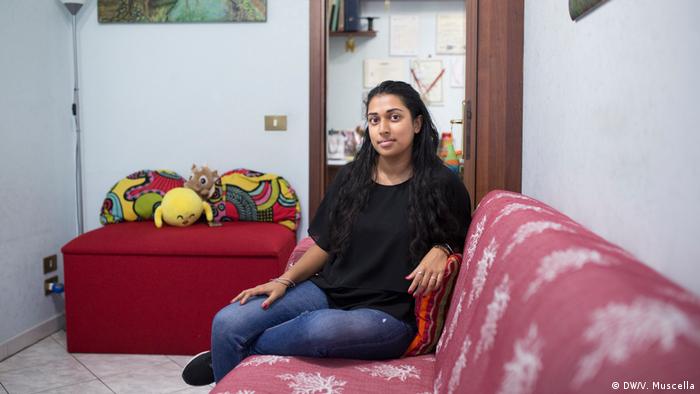Bangladeshi women recount stories of abuse in Saudi Arabia
“However, the feminine returnees comprised of less than 10 percent of the whole workforce, the remaining are still working,” he advised Al Jazeera, referring to about 2 million Bangladeshi expatriates in the kingdom. According to BRAC, a non-governmental organisation working with Bangladeshi migration employees, final 12 months a total of 1,353 female staff got here back to Bangladesh from Saudi Arabia because of the inhuman working circumstances there. After republication on the companion web site, if you make an accompanying publish on social media referencing the republished article, you must embody the related Deeply social media deal with in such publish. For example, (i) for Twitter posts this implies adding the suitable @Deeply tag similar to @SyriaDeeply, @WaterDeeply, or @WomensGirlsHub and (ii) for Facebook this means tagging the appropriate Deeply page in your Facebook publish. “After all, it’s not nearly having a checking account, you also have to have money to place into it,” she says, as she’s swallowed into the crowd.
Bangladesh has a gender hole in account ownership of 29 percentage factors, one of the highest of the world, based on the World Bank’s 2017 Global Findex database. As lately as 2014, the gap between women and men’s access to accounts was 9 share points – the common for the growing world. Women’s checking account ownership within the nation has elevated by 10 % to 36 % since 2014, nevertheless it nonetheless lags far behind men’s at 65 p.c. We examine the consequences of explosive development in the Bangladeshi prepared-made garments trade on the lives on Bangladeshi women. This stems from (a) younger girls becoming more more likely to be enrolled at school after garment jobs (which reward literacy and numeracy) arrive, and (b) older girls changing into more more likely to be employed outdoors the home in garment-proximate villages.
Article Metrics
Rapid expansion of the ready-made garment sector in Bangladesh has radically altered the social and financial material of Bangladesh, notably the lives of Bangladeshi women, who comprise the vast majority of the garment sector’s work force. This blog explores the impact of garment factories on the age of marriage and first child for women uncovered to garment sector jobs, notably at ages when they’re most at risk of early marriage and childbearing.
Caught between erratic rainfall and rising sea ranges, women are struggling to guard their lives and livelihoods. During an particularly severe tropical cyclone in 1991, for example,90 percentof the a hundred and forty,000 individuals who died in the nation were women.
Families on the Indian side made every effort to obtain citizenship paperwork for the Bangladeshi girls/women who marry into their families. Some had taken to know-how and made video calls to connect with their natal households in Bangladesh. Their capability to return to their natal households depended on the porosity of the border at a given cut-off date and the leniency shown by the border guards. They remained tied not solely to their marital household but in addition the Indian nation-state.

Women, in customized and practice, remained subordinate to men in nearly all features of their lives; greater autonomy was the privilege of the rich or the need of the very poor. At the identical time, many Bangladeshis are unaware of the range bangladeshi girl looking for marriage of social companies which are out there to them, including those offered by governmental agencies.
Such programmes could also be important to decreasing the significant health and social prices associated with both husband violence and unwanted and antagonistic being pregnant outcomes. Women experiencing violence from husbands were extra likely to report both undesirable pregnancy (ORs(adj) 1.46-1.54) and a pregnancy loss in the type of miscarriage, induced abortion, or stillbirth (ORs(adj) 1.forty three-1.69). Assessed individually, miscarriage was more likely among victimised women (OR(adj) 1.eighty one).
Republish this text
The Now Exchange, created by Tufts graduate scholar Farah Momen (proven above) and her colleague Giulia Bova, won the award in the contest’ssocial impact observe. The project goals to distribute free contraceptives to Bangladeshi women within the garment business, who make up 80 percent of that sector, after which increase well being companies beyond that. Some 83,000 Bangladeshi women went to work within the Middle East in a 4-fold increase in two years, following the signing of a labor agreement between Bangladesh and Saudi Arabia in 2015, government knowledge shows. In abstract, the garment sector has considerably lowered the risk of early marriage and childbirth whereas additionally growing academic attainment for girls in Bangladesh. These findings may clarify a few of Bangladesh’s outstanding progress in enhancing women’s lives.
Bringing Bangladeshi custom to Rome

That means many women still need a financial institution nearby in order to access monetary companies. But the branches’ restricted opening hours and locations, typically removed from where many ladies live and work, make it tough for girls to suit financial institution visits in around their jobs and family obligations.
The remaining 10 % of ladies have been in households mainly in the professional, trading, or giant-scale landowning categories, and they usually didn’t work outdoors the home. Women in BangladeshBegum Rokeya was a pioneer author and a social worker of the undivided Bengal. She is most famous for her efforts in favour of gender equality and different social issues.
In 2019 Bangladesh’s highest court ruled that on marriage registration forms, a phrase used to describe single women that can additionally mean “virgin” have to be replaced with a word that only means “an unmarried woman”. The majority of rural women, maybe 70 p.c, have been in small cultivator, tenant, and landless households; many labored as labourers half-time or seasonally, normally in post-harvest activities, and obtained payment in type or in meager money wages. Another 20 %, principally in poor landless households, relied on casual labour, gleaning, begging, and other irregular sources of earnings; usually, their revenue was important to household survival.
